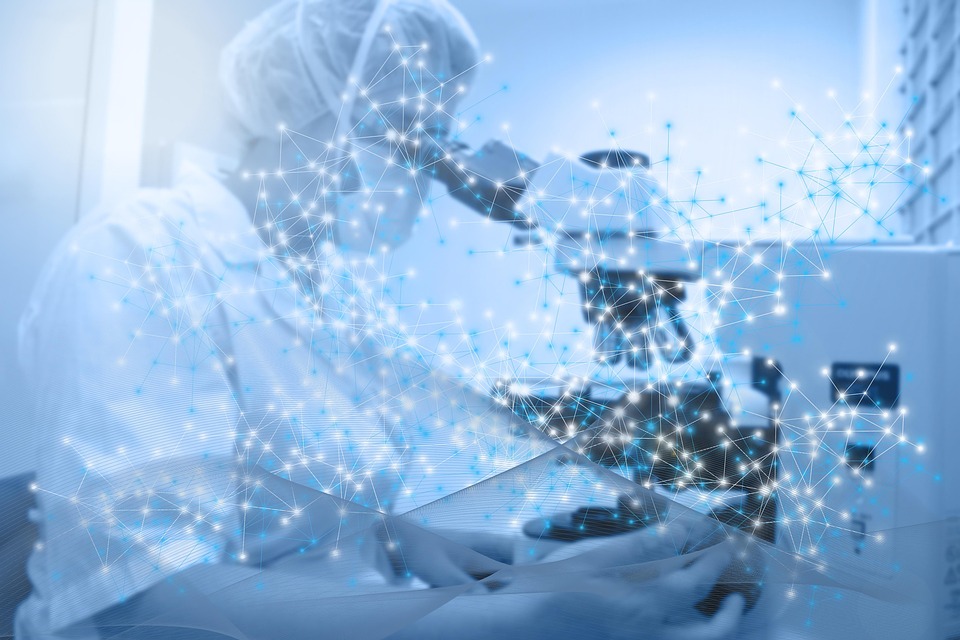From Quarks to Cosmos: The Role of Artificial Intelligence in Modern Physics
Introduction
The journey of understanding the universe has been a long and arduous one, stretching from ancient philosophies to the sophisticated methodologies of modern science. At the very heart of this voyage lies the study of fundamental particles, governing forces, and the cosmos as a whole—areas encapsulated within the domain of physics. Over recent years, the advent of Artificial Intelligence (AI) has revolutionized how physicists explore and understand these complex phenomena. From quarks, the building blocks of matter, to vast cosmic scales, AI is playing a pivotal role in shaping our understanding of the physical universe.
The Interplay of Physics and AI
Reflecting on Traditional Methods
Physics has always relied on mathematical formulations, computational models, and, increasingly, high-throughput experimental techniques. Traditional methods, such as analytical calculations and numerical simulations, have their limitations, particularly when complex interactions come into play. As prediction errors grow and systems become more chaotic or intricate, traditional physics methods often fall short.
AI offers a powerful complement to traditional physics methodologies. It excels in processing vast datasets, identifying patterns, and making predictions with minimal human intervention. The fusion of AI with physics not only enhances existing methods but also introduces innovative approaches to theorizing and experimenting.
The Rise of AI in Data-Driven Sciences
The push toward more experimental and observational sciences has led to the accumulation of enormous datasets. High-energy particle physics, astrophysics, and cosmology, for instance, generate terabytes of data daily. The Large Hadron Collider (LHC), for example, produces petabytes of data each year, creating a data deluge that far surpasses the capacity for manual analysis.
Machine learning (ML), a subset of AI, provides the tools needed to sift through these massive datasets by identifying meaningful patterns and correlations that might escape human notice. This capability has been revolutionary, facilitating the discovery of new phenomena and validating existing theories in less time and with greater accuracy.
From Quarks: Particle Physics and AI
Understanding Fundamental Particles
At the most basic level, quarks are one of the fundamental constituents of matter. They comprise protons and neutrons, which are ultimately responsible for atomic structure. Understanding quarks and their interactions is crucial to unlocking the mysteries of the Standard Model of particle physics.
AI in Experimental Physics
AI has already shown its potential in experimental particle physics. For instance, in experiments conducted at the LHC, machine learning algorithms have been used to filter through the noise of particle collision data. Techniques such as convolutional neural networks (CNNs) allow researchers to train models on large datasets, enabling them to classify and analyze events effectively.
One prominent example is the identification of the Higgs boson. Researchers employed ML techniques to distinguish the rare signals of Higgs particle decay amid a vast background of other reactions, leading to the discovery that confirmed the last missing piece of the Standard Model in 2012.
Theoretical Physics and Simulation
AI also contributes significantly to theoretical particle physics. Simulating fundamental interactions is a computationally intensive task, often requiring vast resources and time. Utilizing AI techniques, researchers can create more efficient algorithms that reduce computation time. For instance, reinforcement learning can optimize parameters for simulations, effectively speeding up calculations involved in quantum field theory and lattice gauge theory, which underpin our understanding of quarks.
Moreover, generative models, like GANs (Generative Adversarial Networks), can produce synthetic data that mimic experimental results, providing insight into untested theories and guiding experimentalists toward promising avenues.
Exploring the Cosmos: Cosmology and AI
Mapping the Universe
Cosmology, the study of the universe’s origins and its large-scale structure, has always been data-intensive. Telescopes equipped with sophisticated sensors capture light from distant galaxies, allowing for the exploration of fundamental questions: What is dark matter? What role does dark energy play in cosmic expansion?
AI in Cosmic Surveys
AI has taken center stage in analyzing cosmological surveys. Projects like the Sloan Digital Sky Survey (SDSS) and the Dark Energy Survey (DES) utilize machine learning to classify galaxy types, recognize anomalies, and even measure cosmological parameters like the Hubble constant. For example, researchers have developed models that classify galaxies based on their morphology, enabling a more accurate understanding of the cosmic web’s evolution.
The combination of astronomy and AI has ushered in a new era known as "Astroinformatics,"where data-driven approaches allow for faster and more accurate interpretations of vast datasets collected over time. Neural networks can predict the clustering of galaxies and model their interactions with dark matter, shedding light on phenomena that would be otherwise too complex to unravel.
Gravitational Waves and AI
The detection of gravitational waves heralded a new chapter in astrophysics, allowing scientists to observe cosmic events like black hole mergers. However, sifting through the noise in the data collected by advanced detectors such as LIGO (Laser Interferometer Gravitational-Wave Observatory) poses a significant challenge.
Machine learning techniques are now used extensively in gravitational wave astronomy. Algorithms help to identify signals and distinguish actual gravitational waves from background noise, enhancing detection sensitivity. Researchers have developed classifiers that automatically analyze data from LIGO, dramatically increasing the efficiency of signal detection.
Implications for the Future of Physics
Bridging Disciplines
The integration of AI in physics reflects a broader trend of interdisciplinary collaboration. Physicists, computer scientists, and data analysts increasingly work together, fostering a diverse exchange of ideas and approaches. This cross-disciplinary effort not only enhances outcomes in physics research but also promotes innovation in AI.
Philosophical Implications
While the benefits of AI are immense, they invoke philosophical questions regarding the nature of scientific exploration. As machines assume more analytical and predictive roles, the traditional notions of intuition, creativity, and human insight in scientific discovery are challenged. Will scientists become more reliant on AI for their hypotheses? How will the role of human intuition evolve in a landscape dominated by data-driven methodologies?
Ethical Considerations
Ensuring Transparency
As AI applications in physics expand, ethical considerations surrounding transparency and accountability become paramount. The reliance on black-box algorithms can lead to outcomes that remain unexplained, potentially undermining the scientific method’s foundational principles. Ensuring that AI models are interpretable and that their decisions can be justified is essential for maintaining credibility in scientific inquiry.
Access and Equity
Moreover, as AI becomes integral to data analysis in physics, questions arise about access and equity. Not all research institutions have equal resources to implement AI technologies, which can create disparities in research capabilities and outcomes among varying academic environments. Efforts must be made to democratize access to AI tools and training, ensuring the global scientific community can benefit from advancements.
Conclusion: Toward a New Paradigm
The role of Artificial Intelligence in modern physics, spanning from the mechanics of quarks to grand cosmological surveys, is complex, transformative, and filled with potential. AI’s capabilities for sifting through data, enhancing simulations, and optimizing frameworks for experimental physics are paving the way for new discoveries and a deeper understanding of the universe.
By fostering collaboration across disciplines and addressing ethical considerations, the scientific community can harness AI’s power while ensuring that the core principles of inquiry and discovery remain intact. As we navigate this new paradigm, the continued synergy between physics and artificial intelligence promises to unveil the mysteries of the universe, taking us further into the depths of space and the intricacies of matter than ever before.
As we explore these frontiers, we stand on the threshold of unprecedented scientific advancement, driven by the partnership between human intellect and machine learning, guiding our understanding from the tiniest particles to the vast expanse of the cosmos.
[modern_footnote_source] indicates sections where further citations should be included, ideally with references to contemporary studies, articles, and publications that align with this narrative.


























Add Comment